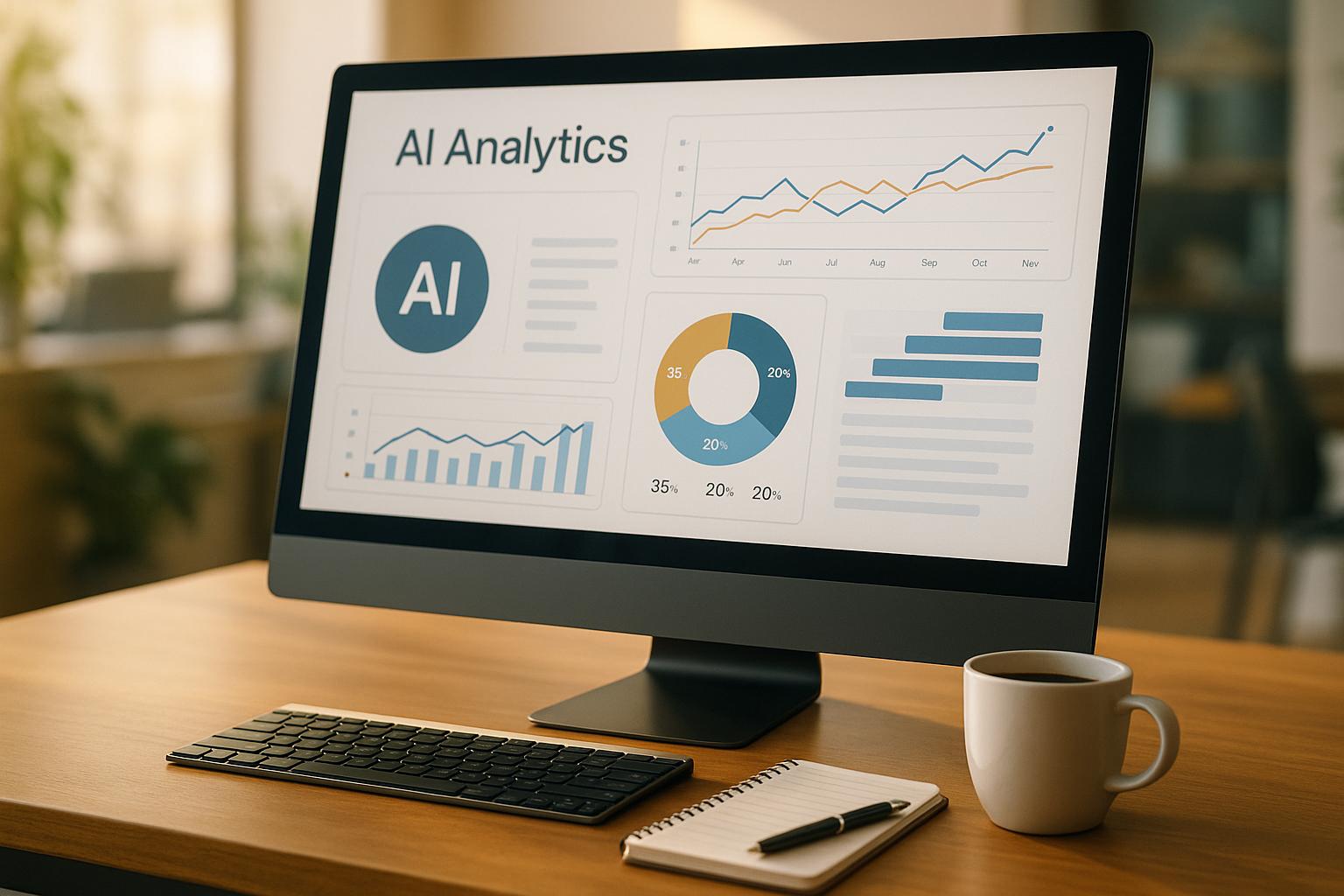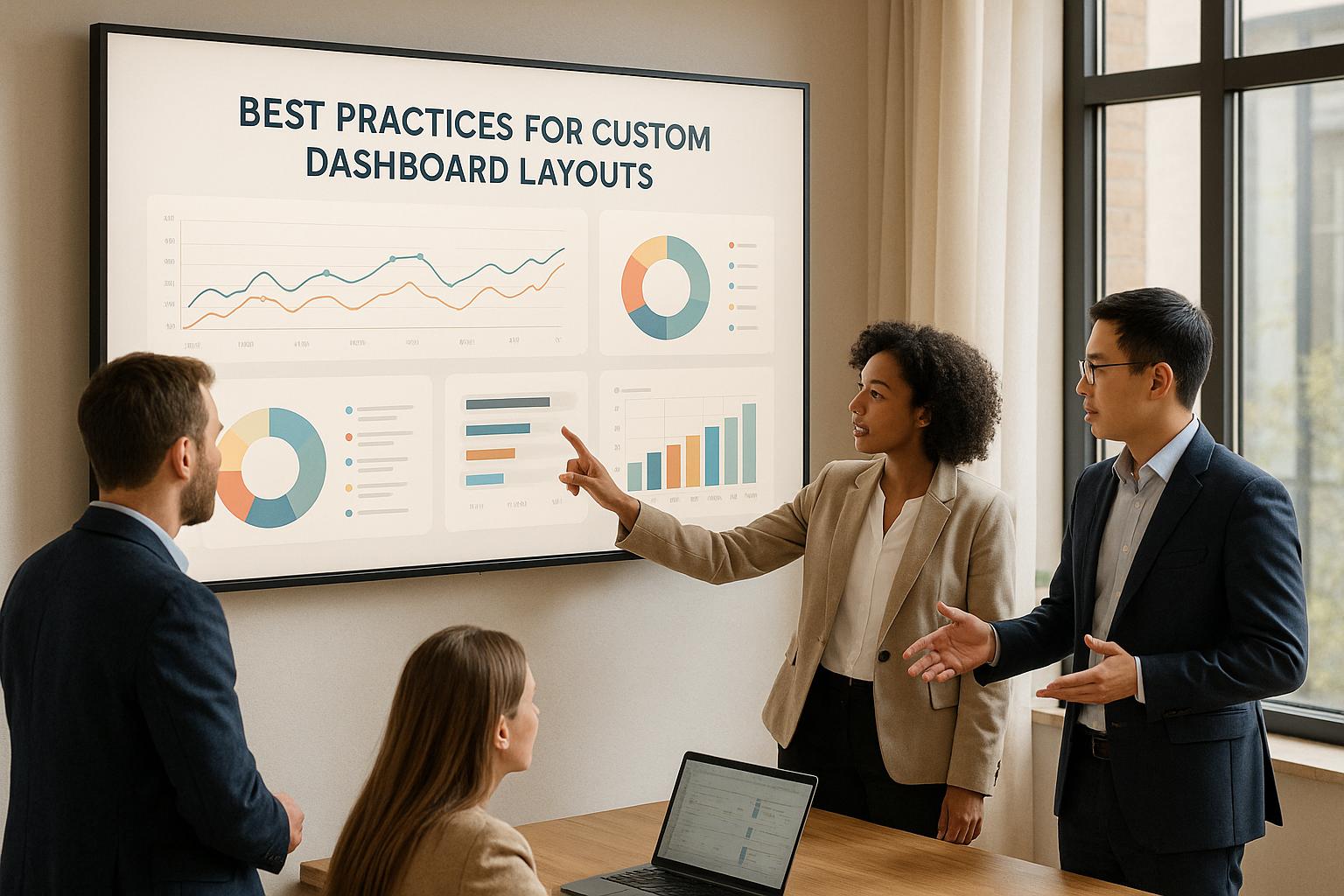Predictive analytics is transforming workforce planning by using data and machine learning to predict workforce trends and needs. Here’s what you need to know:
- What It Does: Predicts employee turnover, skill gaps, and hiring needs using historical and external data.
- Why It Matters: Saves costs (e.g., Hewlett Packard saved $300M on employee retention), improves hiring, and enables proactive HR decisions.
- How It Works: Combines internal data (e.g., employee performance) with external trends (e.g., labor market data) to guide decisions.
- Key Results: Companies like IBM and Walmart have reduced turnover, cut hiring times, and improved workforce efficiency.
Predictive analytics allows businesses to shift from reactive to proactive workforce planning, ensuring they meet future demands with precision.
Data Sources for Workforce Analytics
Internal Data
Predictive workforce models heavily depend on internal data. This includes employee demographics, job histories, performance metrics, and skill assessments, all of which help reveal workforce trends and capabilities. For instance, IBM uses employee performance data and skill assessments to pinpoint skill gaps and create tailored training programs [1].
Another example is Eagle Hill Consulting, which assisted a global drug manufacturer in consolidating HR, performance, and training data into a single system. This centralization allowed for more accurate workforce predictions and smarter talent management [2].
While internal data provides a strong starting point, external data adds essential context to build a more complete workforce strategy.
External Data
External data enhances internal insights by offering a broader view of market conditions and industry trends. Walmart, for example, leverages labor market data and seasonal patterns to fine-tune staffing levels, reduce turnover, and boost operational efficiency [3].
Common external data sources include:
- Labor market trends and salary benchmarks
- Demographic changes and economic indicators
- Competitor hiring practices
- Graduate output from relevant educational programs
Blending internal and external data effectively requires strong governance to ensure accuracy, privacy, and reliability. This includes regular data validation and strict adherence to privacy regulations.
"The integration of internal and external data sources has become crucial for modern workforce planning. Organizations that successfully combine these datasets can better anticipate future talent needs and make more informed decisions about their workforce strategies." [3]
How AI and Machine Learning Transformed HR Analytics
Predictive Models in Workforce Planning
Predictive models use data to provide insights that help guide decision-making in workforce planning.
Predicting Employee Turnover
IBM's retention model boasts a 95% accuracy rate, analyzing factors like pay and career progression to anticipate employee turnover. These insights helped IBM cut turnover in key roles by 25% in 2024 [1].
"Predictive analytics allows HR teams to forecast workforce needs with unprecedented accuracy using historical data and machine learning." - Ignite HCM [1]
Predictive analytics doesn’t stop at turnover - it also tackles challenges like skill shortages and leadership planning.
Analyzing Skill Gaps
Google employs predictive models to anticipate future skill needs by examining employee certifications, project history, and industry trends. This helps pinpoint gaps and shape training or hiring strategies. By addressing these gaps early, companies can ensure their workforce is ready to meet future demands.
Planning Recruitment and Succession
After identifying skill gaps, predictive tools can streamline hiring and secure leadership pipelines. Walmart's AI-driven recruitment model cut hiring times by 30%, boosted first-year retention by 25%, and improved new hire performance by 20% through data-driven analysis of hiring and performance trends [3].
For succession planning, predictive models assess leadership potential by analyzing career paths, skill growth, and performance data. This ensures organizations are prepared for leadership transitions.
sbb-itb-bec6a7e
Steps to Implement Predictive Analytics
Once you've explored predictive models, the next challenge is putting them into action effectively within your organization.
Evaluating Readiness
Before diving in, it's crucial to assess whether your organization is prepared to implement predictive analytics. This involves reviewing your current capabilities and infrastructure.
| Assessment Area | Requirements | Success Indicators |
|---|---|---|
| Data Quality | Centralized employee information | Accurate and consistent records |
| Infrastructure | Integrated HR systems | Unified and accessible data |
| Organizational Support | Executive endorsement | Budget and resources secured |
| Team Capabilities | Foundational analytics knowledge | Data literacy across teams |
This evaluation helps identify gaps and ensures you're set up for success. Once readiness is confirmed, the focus shifts to selecting the right tools.
Choosing Tools
The tools you choose should integrate easily with your existing systems, offer intuitive interfaces, automate key processes, and scale as your organization grows. Platforms like AI for Businesses are specifically tailored for SMEs and scaling companies, simplifying the selection process and ensuring compatibility with current systems.
Forming a Team
To make predictive analytics work, you'll need a well-rounded team that brings together diverse expertise:
- HR Analytics Lead: Aligns analytics initiatives with business goals.
- Data Scientist: Manages advanced analysis and predictive modeling.
- IT Expert: Oversees system integration and ensures data security.
- Subject Matter Expert: Offers industry-specific knowledge and context.
Investing in training for your team can improve productivity by 10-20% [3]. Transparency, clear communication, and achieving quick wins are key to building trust in the process and securing stakeholder buy-in.
With a prepared team and the right tools, your organization can confidently move forward, using predictive analytics to drive impactful workforce planning.
Evaluating and Refining Predictive Models
Key Performance Indicators
To measure how well predictive analytics is working, you need to focus on specific KPIs that match workforce planning goals. Here's a breakdown:
| KPI Category | Metrics | Target Impact |
|---|---|---|
| Retention | Employee turnover rate, High-performer retention | 15-25% decrease in attrition |
| Recruitment | Time-to-hire, Cost-per-hire, Quality of hire | 30% cut in hiring expenses |
| Skills Management | Skills gap coverage, Training effectiveness | 90% coverage of critical skills |
| Model Accuracy | Prediction accuracy rate, False positive rate | Over 85% accuracy benchmark |
Tracking these metrics is just the starting point. To keep predictive models effective, regular refinement is essential.
Continuous Improvement
Predictive models need regular updates to stay accurate and aligned with business goals. This process involves routine reviews, updates, and gathering feedback from stakeholders. For example, IBM uses AI-powered analytics to recommend personalized career development paths, boosting employee engagement by 20% [3].
As businesses fine-tune their models, they also adapt to new trends in AI-driven workforce planning, which are reshaping talent management strategies.
Trends in AI-Powered Workforce Planning
Refining predictive models goes hand in hand with evolving trends in AI-powered workforce planning. These advancements are transforming how HR operates by introducing real-time analytics and AI-driven personalization. Key developments include:
| Trend | Application | Business Impact |
|---|---|---|
| Real-time Analytics | Instant insights and workforce predictions | Faster, more informed decisions |
| Personalized Learning | AI-customized training programs | Enhanced skills development |
| Automated Succession | Smarter talent pipeline management | Fewer succession gaps |
Conclusion: Predictive Analytics in Workforce Planning
Key Points
Predictive analytics is reshaping workforce planning by enabling organizations to make proactive, data-driven decisions. This approach helps businesses stay competitive in a constantly evolving market.
| Impact Area | Advantages | Results |
|---|---|---|
| Talent Management | Identifying flight risks, succession planning | Lower turnover costs, stronger talent pipeline |
| Resource Optimization | Accurate workforce forecasting, skill gap analysis | Better resource use, reduced hiring costs |
| Strategic Planning | Data-backed decisions, proactive solutions | Improved efficiency, higher ROI |
"Predictive analytics has emerged as a powerful tool enabling HR professionals to leverage historical data, machine learning algorithms, and statistical modeling to forecast future workforce needs with unprecedented accuracy" [1]
AI-powered tools are now at the forefront of these advancements, driving smarter workforce strategies.
Using AI for Workforce Management
For small and medium enterprises (SMEs) and growing businesses, adopting predictive analytics tools can transform workforce planning. Examples like IBM's retention model and Walmart's recruitment strategies highlight how AI can tackle workforce challenges head-on. These technologies allow companies to:
- Predict future workforce requirements with precision
- Build retention strategies based on employee behavior insights
- Design data-informed succession plans
- Streamline recruitment through predictive models
Platforms such as AI for Businesses provide SMEs with access to tailored AI solutions, helping them overcome challenges like data integration, analytics gaps, and privacy concerns. These tools not only simplify adoption but also enhance the efficiency of workforce planning.
The path forward in workforce planning lies in strategically applying predictive analytics and AI to create strong, adaptable teams in a competitive business world.
FAQs
How can AI be used for workforce planning?
AI is reshaping workforce planning by using predictive analytics to streamline processes and improve decision-making. Companies like Unilever and Cisco have already seen major benefits:
| Company | AI Implementation | Results |
|---|---|---|
| Unilever | Recruitment analytics powered by AI | Saved 70,000 hours of interviews annually |
| Cisco | Predictive workforce planning | Enhanced skills gap identification and talent hiring |
"HR teams have a unique opportunity to lead the way in adopting AI." - Lambros Lambrou, CEO of Aon Human Capital [3]
AI tools can help businesses in various ways, such as optimizing work schedules based on historical and live data, identifying employees at risk of leaving, mapping out workforce skills, and improving hiring processes with smarter candidate matching. Platforms like AI for Businesses provide tailored solutions for small and medium-sized enterprises, addressing challenges like data integration and privacy concerns while delivering insights for workforce strategies.


